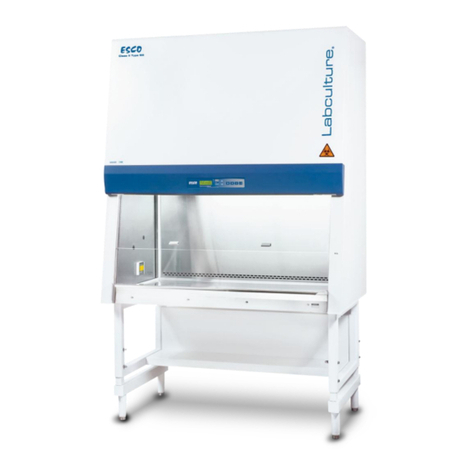
Page 4 of 34
LISTofFIGURES
PAGE
Figure 1: Temporary set up in shipping crate ....................................................................................................12
Figure 2: Connect Power Supply to SuiteSentry Single Screener in Shipping Crate .....................................12
Figure 3: SuiteSentry Single Screener standing – Ready to TEST Location....................................................12
Figure 4: Drill Locations for Mounting Brackets ...............................................................................................14
Figure 5: Typical Installation ...............................................................................................................................14
Figure 6.1, 6.2, 6.3, 6.4 Fastening Wall Toggler to Wall ...................................................................................15
Figure 7: Fastening Wall Toggler through Mounting Block and into wall. ...................................................... 16
Figure 8: Exploded view of Mounting Block, toggle, screw and washer into wall...........................................16
Figure 9: a, b, c, d, Exploded views of Mounting Block+Mtg Block Extension over Rub Rail. ......................16
Figure 10: Fastening Mounting Block to SuiteSentry Single Screener ...........................................................17
Figure 11: Completed Installation.......................................................................................................................17
Figure 12: SuiteSentry Single Screener - 3 Modes of Operation......................................................................20
Figure 13: a., b., c. - SuiteSentry Single Screener Operation and Usage .......................................................22
Figure 14: SuiteSentry Single Screener Controls.............................................................................................23
Figure 15: SuiteSentry Single Screener top cap and PIR access/adjustment.................................................25
Figure 16: Typical Installation .............................................................................................................................28
Acronyms used in this manual
ACR: .........American College of Radiology
TJC: ..........The Joint Commission
Zone II: .....ACR definition of area immediately outside the MRI control room
Zone III: ....ACR definition of area immediately outside the MRI magnet room
Zone IV: ....ACR definition of area inside the MRI magnet room
FMD: .........Ferromagnetic Detector
LED: ..........Light Emitting Diode; electronic replacement for lamp
PIR: ...........Passive Infra-Red-Detects body heat and motion and
...................enables SuiteSentry Single Screener to go into Active Mode
Symbols and Terms
NOTE: The following Symbols and Terms may be used in this manual:
Damage in Transportation
All packages should be closely examined at time of delivery. If damage to outer package is visible,
make certain the notation “damaged in shipment” was written on all copies of the freight or express
bill when delivery is accepted by your receiving agent. Whether noted or concealed, damage must
be reported to the carrier immediately upon discovery, or in any event, within 14 days after
receipt, and the contents and containers held for inspection by the carrier. Transportation
company will not pay a claim for damage if an inspection is not requested within this 14 day
period. Transport this product for a period not to exceed 4 weeks. The following environmental
conditions must be adhered to in order to avoid damage to the product.
Ambient Temperature: -34°C (-11°F) to +60°C (+140°F)
Relative Humidity: 15% TO 95% (Non-Condensing)
Atmospheric Pressure: 50 kPa (0.5 atm) to 127 kPa (1.25 atm)
WARNING!
Warning statements identify conditions or practices that could result in injury or death.
CAUTION!
Caution statements identify conditions or practices that could result in damage to the product or
other
ro
ert
.
TIP or HINT:
The following is a recommendation and may help simplfy efforts during the installation.




























